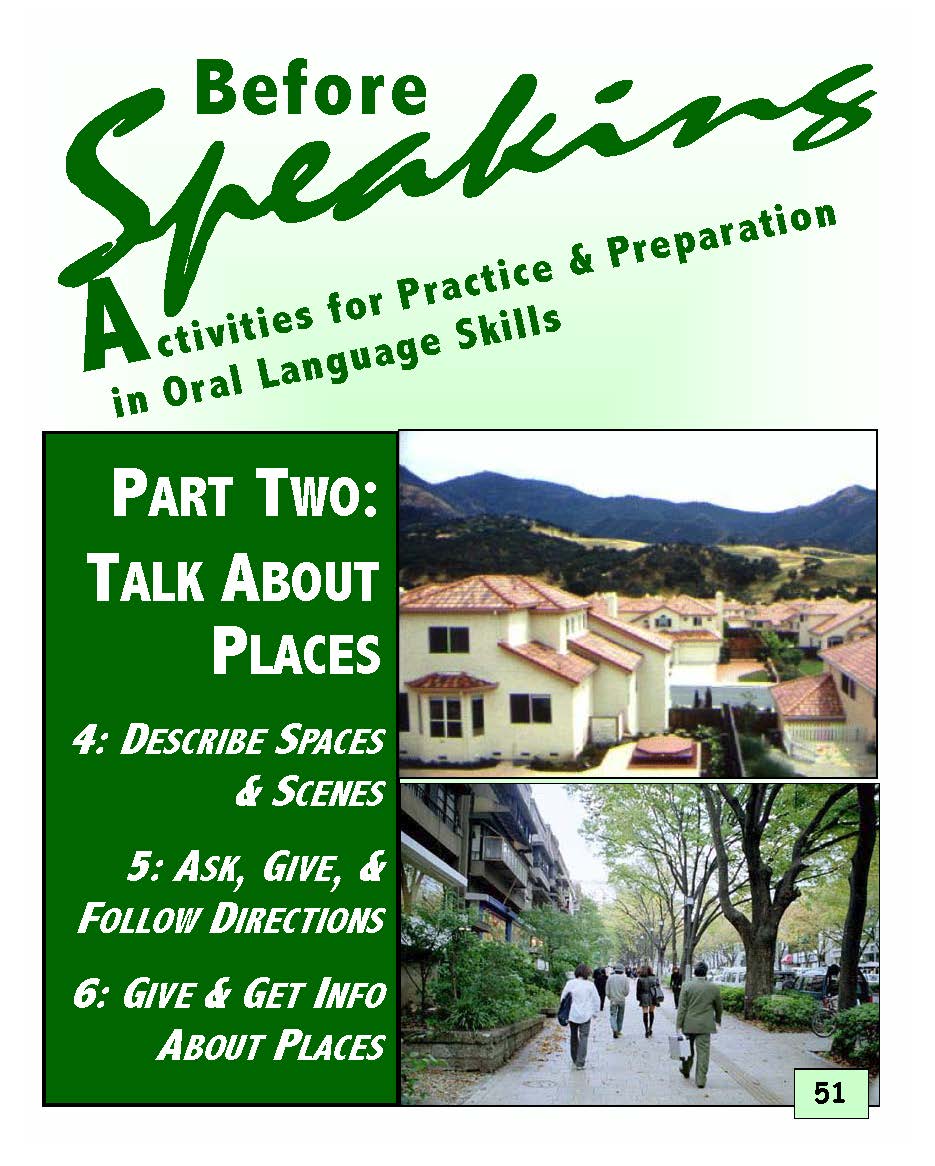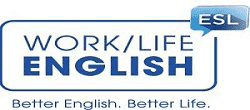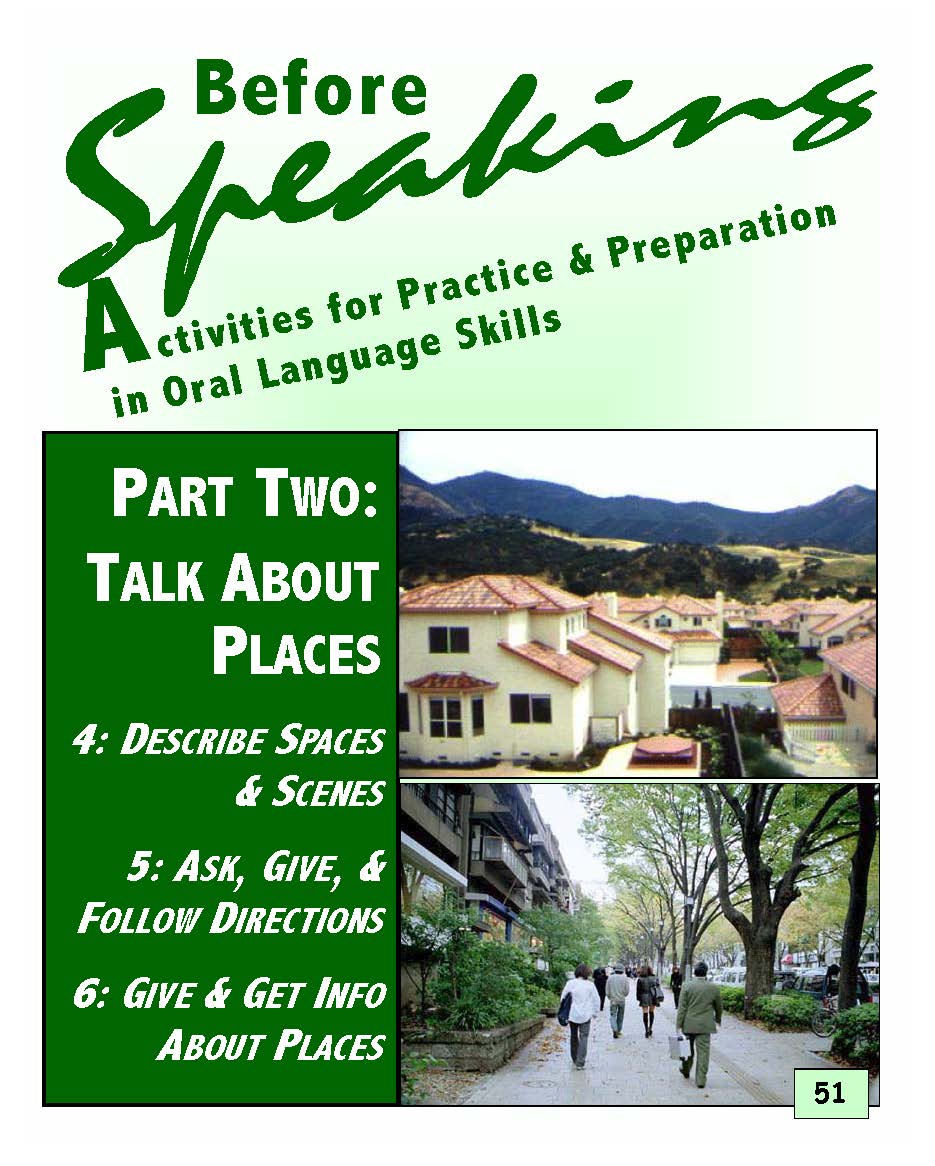Work/Life English
E-02.03 Talk About Places: Describe Spaces & Scenes
E-02.03 Talk About Places: Describe Spaces & Scenes
Description:
This resource offers a dynamic approach to language learning by focusing on spatial description skills. Through engaging activities, vocabulary usage, and descriptive exercises, learners can develop the ability to discuss and describe various places. The inclusion of colorful photos enhances the learning experience by evoking personal memories and emotions. The comprehensive answer key provides learners with valuable feedback and opportunities for self-teaching.
Key Components:
- 55-page booklet with content spanning pages 51 to 74.
- 31-page Answer Key with suggested (model) responses.
- Colorful photos that evoke memories and feelings from personal experiences.
- Vocabulary and sentence patterns for describing spaces and scenes.
- Grammar and Vocabulary Notes for effective language usage.
- Sample floor plans, campus maps, and directive prompts for mini-speeches.
- Addresses various competencies including spatial description, vocabulary usage, and sentence construction.
Pages:
55 pages
Who They're For:
- English-language teachers seeking interactive materials for oral language instruction.
- Learners looking to improve their spatial description skills and vocabulary.
- Helpers assisting individuals in enhancing their oral language proficiency.
- Suitable for learners of all ages and proficiency levels.
- Applicable in diverse learning contexts, including classrooms, self-guided study, tutoring, and more.
Why It’s Useful:
We spend our lives in (closed-in vs. wide open) places. Reviewing and using Nouns & Adjectives, Location Questions & Answers, Connecting Words, Sentences with the Filler IT, and the Present Continuous), text users will engage in enjoyable, effective language sessions with colorful photos sure to evoke memories and feelings from their own experiences. Even longer than the text download, a BeSp Answer Key excerpt provides plenty of self-teaching input.
What You’ll Do:
[1] Together, view and comment on the page 51 Part Two Opener to Before Speaking: Activities for Practice & Preparation in Oral Language Skills. Anticipate its content (“Talk About Places”) and the Competencies it addresses. The first of these is to “Describe Spaces & Scenes.” Tell what (you think) Listening & Speaking pedagogy and activities with these aims might entail.
[2] On pages 52-58. follow Instructions 4.A to Tell About Interiors. Use given vocabulary & sentence patterns with words of your own to describe impressions and feelings that the 28 Pictures of Living Spaces can evoke. (Meaningful to text compilers, info about the real locations and uses of the pictured places is revealed in the Answer Key). In 4.B on pages 59-64, refer to Grammar & Vocabulary Notes when helpful: hear and tell about Structures that range from an information booth, child’s shed, and outhouse to sizeable downtown vs. marina apartment complexes. Use input and images regarding 4.C Outdoor Scenes on pages 65-70 in equivalent ways: these begin with a miniature Stonehenge in a small town and end with the surface of the Moon.
[3] *4-D on pages 71-74 will help with “Communication About Real Places.” It begins with a sample floor plan for a (no longer existing) classroom + campus map. It culminates in Directives for Mini-Speeches with meaningful picture post cards and other photos.
[4] The attached 31 Answer Key pages may prove fruitful for language development derived from or based on extensive (native-speaker) input.
Couldn't load pickup availability


